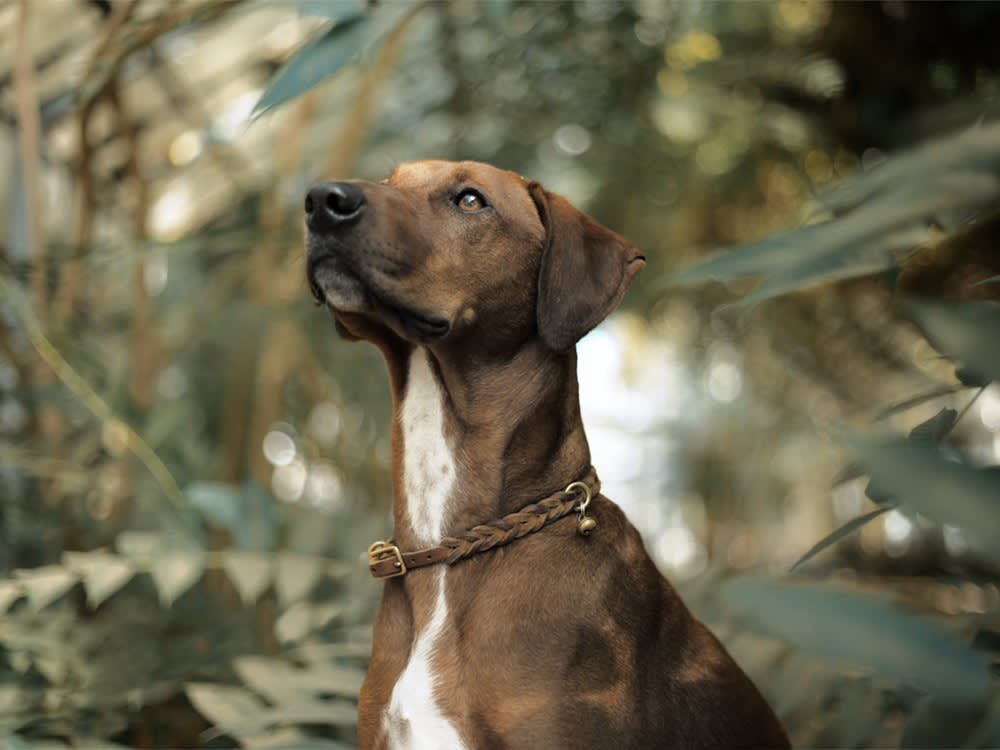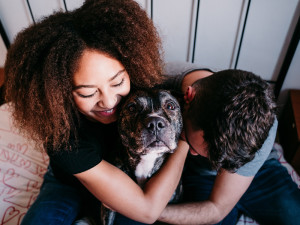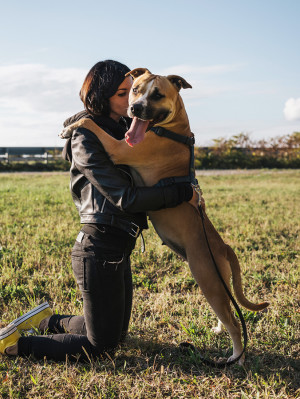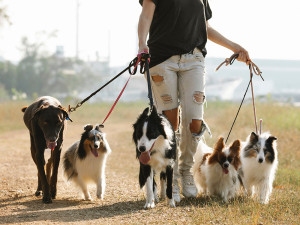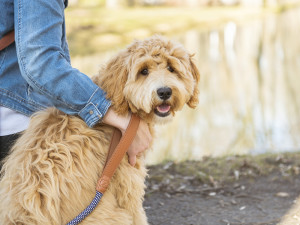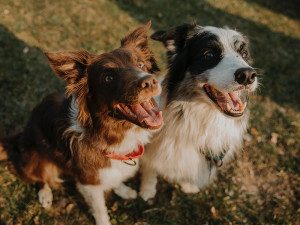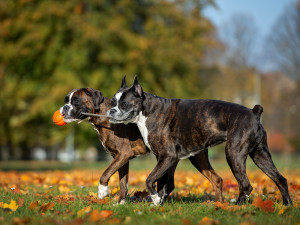Can You Identify Dog Breeds Visually?
The truth is breed labels are often wrong.
An online search will turn up many sites offering “tips on how to identify the breeds in a mixed-breed dog,” apps that purport to identify dog breeds from photographs and in most shelters, each dog’s kennel has a card on which the dog’s likely breed (or breeds) is indicated. The fact is, nearly all of these identifications of dog breeds are guesses.
Yes, there are dog-breed DNA tests, but most animal shelters can’t afford to DNA test every dog. Instead, they rely on staff members’ judgment to identify a dog’s breed based on their appearance. Some shelters have changed their breed labels to try to make this clear: “Looks like …” or “We guess that …” However, others go further and eliminate breed labels entirely.
Save on the litter with color-changing tech that helps you better care for your cat.
All of these methods rely on visual references, here’s why this approach is flawed.
The breed-appearance correlation is more complicated than you think.
A dog’s physical appearance is largely controlled by a small number of genes, so it’s important to understand dominant versus recessive genes. Recessive are those you need to inherit two copies of to show the trait and dominant you only need one. Traits, such as a black coat, short hair, or drop ears might make you think of some of the more popular breeds with these same features.
But dominant traits such as these, just by the very nature of being dominant, can be attributed to many breeds beyond the one you’re thinking of. Likewise, traits that are recessive, such as a long coat, prick ears, or tan points that are associated with a specific breed, may not make it past the dominant ones in a mixed-breed and therefore can’t be seen.
The way a dog’s different breeds in their ancestry show up visually can vary greatly depending on what dominant traits and/or recessive traits a dog receives from their parents. But that doesn’t stop shelters from trying to identify dog breeds from photographs or other visual means.
Identifying dog breeds visually is inaccurate.
Those that have eliminated breed labels say the adoption process has been improved; in some places, adoption rates have improved as well. What’s the argument for eliminating breed labels? For many, the issue started with Pit Bull-type dogs.
Most shelters are full of medium-sized, short-coated, blocky-headed dogs who tend to get labeled as Pit Bulls — a type for which there is no legal or kennel club definition. But a number of studies have shown that people’s guesstimates often don’t match a dog’s true genetic heritage.
In one study, staff members at four shelters were asked to guess the breed of 120 dogs. Fifty-five of the dogs were identified as some kind of Pit Bull, but when they were DNA tested, only 36 percent had ancestry from one of the recognized bully breeds (generally, American Pit Bull Terrieropens in new tab, American Staffordshire Terrieropens in new tab, and Staffordshire Bull Terrier). Five of the dogs who did have one of these in their DNA hadn’t been labeled as such; the guesstimates missed 20 percent of the 25 actual Pit Bulls.
In this context, making a mistake about breed type is a big deal. There are places where it’s against the law to own a Pit Bull, or where you can’t get home or pet insurance if you have one. Even where that’s not the case, the name still carries a stigma.
In another study, researchers determined that shelters inaccurately represent the breed heritage of three-quarters of dogs sampled. The studyopens in new tab, led by Lisa Gunter in the Department of Psychology at Arizona State University, sampled the DNA of 919 dogs and analyzed using the Wisdom Panel opens in new tab test. The results were illuminating. In the dogs tested:
186 breeds and varieties were identified.
4.9 percent were identified as purebred (45 dogs, representing 22 breeds).
18.7 percent were identified by a single breed, two specific breeds (like Labradoodles) or one breed plus “mixed.”
81.3 percent had at least two identifiable breeds “plus ‘mixed’ in their three-generational breed heritage.”
Depending on the shelter, between 26.6 percent and 30.7 percent of dogs had at least one breed classified as “Pit Bull-type” (American Staffordshire Terrier, Staffordshire Bull Terrier).
The second most common breed at both shelters was Chihuahua (between 17.8% and 24 percent). Poodle came in third (between 14.6 and 15.3 percent, depending on the shelter).
Even though “Pit Bull-type” breeds and Chihuahuas are the most widely found in shelters, the Wisdom Panel test revealed that the amount of these breeds in any given dog was low to moderate.
It oversimplifies dog breed behavior.
It’s frustrating for many reasons to watch shelter dogs being rejected purely on the basis of breed stereotypes, particularly since most breeding now selects for appearance rather than function. “The more that we breed purebred dogs for looks, the less likely those things we started the breed for are going to hold true,” says Barbara Hutcherson of Fairfax County Animal Shelter in Herndon, Va. “So you might have a dog in front of you that’s a lovely quiet dog that you’ve had in foster and you know [the dog’s] not noisy — but try convincing someone, when you say ‘Beagleopens in new tab’ and they think ‘noise.’”
Relying on traditional breed characteristics is even more absurd when you’re looking at a mixed breed dog. “We don’t understand how individual breeds play out in the behavior of the dog,” says Lisa Gunter of Arizona State University, Tempe. “A first-generation cross of Labradoopens in new tab r and Border Collieopens in new tab doesn’t mean [the dog is] going to swim well and herd sheep. That’s not how genetics works.”
Too, we all seem to share an unspoken assumption that a mixed-breed dog is a dog with two purebred parents, when usually nothing could be further from the truth. Gunter is involved in a study that DNA tested more than 900 shelter dogs. Breed identification results for nearly 80 percent of the dogs showed two-plus breeds (the plus indicates that no specific purebred could be distinguished for at least one great-grandparent) and ranged up to five-plus breeds. On average, a single breed contributed around 30 percent of a dog’s heritage. Gunter feels strongly that the usual cage cards are a huge oversimplification. “It does a disservice to the complexity of shelter dogs, and to who these dogs are,” she says.
Shelters are changing the conversation.
Given that most of the breed labels are complete guesses, it begins to make sense that some shelters have decided to remove breed identification from the conversation. “I think the real benefit of not talking about breed is that it allows you to talk about the dog as an individual — that this is what we’ve observed about this dog,” says Hutcherson.
Increase adoption rates for all dogs.
A study showed topens in new tab hat in a shelter where breed identification labels were eliminated, the adoption rate for Pit Bulls went up, their euthanasia rate went down 12 percent, and their length of stay at the shelter was reduced. Another interesting finding was that while adoption rates increased the most for Pit Bulls, they went up for other dogs as well. “All the dogs benefited,” says Gunter, one of that study’s authors. “That was something that we weren’t anticipating.”
Others who’ve seen the effect of breed labels might not be surprised by those results. “We would notice that people would walk through the kennel and they weren’t looking at the animals inside, they were looking at the kennel cards,” says Kristen Auerbach of Austin Animal Services. “And then, depending on the breed, they literally never even looked inside the cage. It quickly became clear that this wasn’t a Pit Bull issue; it was a bigger issue.”
Promote better conversations with potential adopters.
“What this does is … force people to go through the kennels and come back and ask us, ‘What breed is that dog?’” says Lauren Lipsey of the Washington Humane Society (WHS) in Washington, D.C. “Previously, they … wouldn’t have had to engage us in conversation and could just walk out because they didn’t like the answer.”
Now, Lipsey says, when people ask about a breed, staff can dig down into what they are really looking for. “What is it about that breed? You want a dog you can run with? Great, we have a ton of those. A dog that is good with children? Let me steer you toward these dogs that have lived with children. Just because that animal looks like a Lab doesn’t necessarily mean it’s good with children.”
Leaving it open to the adopter’s interpretation.
“In the shelter, people can walk through and they’re going to make their own identification anyway: ‘That looks like a Poodle, and I want a Poodle.’” Auerbach doesn’t consider that a problem for those people, or those dogs. “If they view a dog as a Cocker Spaniel, then the dog’s a Cocker Spaniel, and if someone else views [the dog] as a Springer, and that’s what they would like, then that dog is there,” she says. “By removing the breed labels, the dog can be whatever that person wants that dog to be.”
Embracing breed diversity
Eliminating all breed identifications may seem radical, but there’s no reason a shelter has to go all the way. “What we’re arguing is that shelters should have an option,” Auerbach says. Label an obvious Pug as a Pug, but why be forced to make a wild guess about a dog who is probably a mix of many breeds?
In a sense, there’s nothing new about the idea. Auerbach thinks that the reason so many medium-sized, short-coated dogs are called Pit Bulls is that we’ve lost much of the vocabulary we used to use to talk about dogs. “We all remember that for our grandparents, the dogs were mutts — they were mongrels. We had more language to describe mixed-breed dogs,” she says. “Pit Bull has kind of replaced mutt, and that’s a problem.”
Our grandparents didn’t need DNA tests to recognize the complexity of mixed-breed dogs. “When they talked about ‘Heinz 57,’ that’s what they meant,” says Auerbach. “Not two breeds mixed with each other, but many.” If, after adopting a mysterious mix breed, you’re still interested in figuring out what the dog breed is, just order a DNA test — you might be surprised with the results!
How can you identify a dog’s breed?
You can try to identify a dog breed by their physical appearance and behavioral characteristics but it may not be accurate. Dog DNA tests can provide precise dog breed identification information.
Can you identify a dog’s breed by picture?
While many apps claim they can identify a dog’s breed through a picture alone, they are often inaccurate because genetics don’t work like that. Breed DNA tests provide more reliable results.
